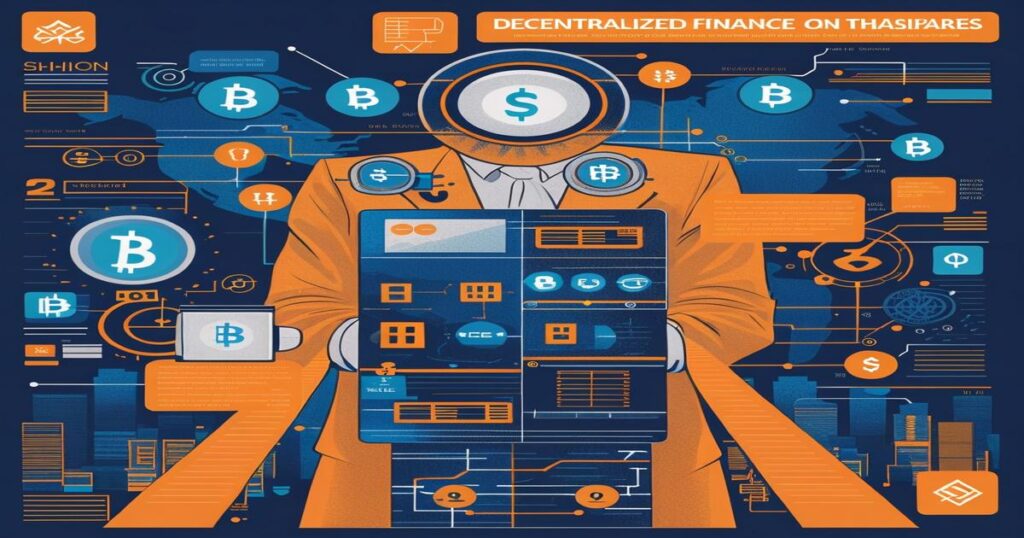How Decentralized Finance is Revolutionizing Traditional Banking: Unraveling the Future of Finance
The world of finance is undergoing a seismic shift with the rise of Decentralized Finance (DeFi). Once the realm of tech enthusiasts and crypto pioneers, DeFi is now mainstreaming financial innovation and disrupting traditional banking paradigms.
Understanding Decentralized Finance: The Basics
DeFi represents a shift from centralized, traditional financial systems to decentralized, peer-to-peer financial networks built on blockchain technology. Unlike traditional institutions, which rely on centralized control, DeFi platforms operate without intermediaries, offering more accessibility, transparency, and security.
Key Components of DeFi: How It Works
Smart Contracts
Smart contracts are the backbone of DeFi. These are self-executing contracts with the terms of the agreement directly written into lines of code. They eliminate intermediaries and allow for trustless transactions.
Decentralized Applications (dApps)
dApps are applications that run on a decentralized network, allowing users to interact directly with the DeFi ecosystem without middlemen.
Impact of DeFi on Traditional Banking
DeFi is challenging the conventional banking sector in several ways:
- Accessibility: DeFi opens financial services to anyone with internet access, breaking geographical and socioeconomic barriers.
- Reduced Costs: By removing intermediaries, DeFi platforms reduce transaction costs significantly.
- Transparency and Security: Blockchain transparency ensures all transactions are public, and cryptographic security safeguards against fraud.
Real-World Use Cases: DeFi in Action
To grasp the practical implications of DeFi, consider these pioneering examples:
- Lending and Borrowing: Platforms like Aave and Compound allow users to lend and borrow cryptocurrencies at competitive rates without a traditional bank.
- Decentralized Exchanges (DEXs): Uniswap and SushiSwap let users trade crypto assets directly with one another, ensuring liquidity and ease of exchange without centralized control.
- Yield Farming: Users earn passive income by providing liquidity to DeFi protocols, as seen on platforms like Yearn.finance.
Challenges and Considerations
Despite the promising potential of DeFi, several challenges need addressing:
- Scalability: Many DeFi platforms face scalability issues, impacting transaction speed and cost.
- Regulatory Uncertainty: As DeFi grows, so does regulatory scrutiny, which could lead to future compliance challenges.
- User Risks: The irreversible nature of blockchain transactions raises potential risks, requiring users to exercise due diligence.
Navigating the DeFi Landscape: Strategic Insights
For those looking to explore DeFi, here are some strategic insights:
- Research Thoroughly: 🚀 Understand the projects you invest in, their teams, and the underlying technologies.
- Risk Management: Use diversified portfolios and consider stablecoins to mitigate volatility.
- Stay Informed: Follow industry news and community discussions to remain updated on developments.
Conclusion: DeFi as a Catalyst for Financial Transformation
The convergence of technology and finance through DeFi presents unparalleled opportunities for innovation and empowerment. While challenges persist, the decentralized nature of this movement could reshape economic landscapes, fostering a more inclusive and equitable future.
FAQ: Navigating DeFi Queries
- What is DeFi?
DeFi stands for Decentralized Finance, a system where financial products are available on a public decentralized blockchain network. - How is DeFi different from traditional finance?
Unlike traditional systems that require intermediaries, DeFi uses smart contracts on a blockchain to facilitate transactions directly between users. - Is investing in DeFi safe?
While DeFi offers exciting opportunities, it also entails risks such as market volatility and protocol vulnerabilities, making thorough research and risk management essential.

